Oracle’s Ellison takes on AWS with autonomous services: Eliminate human labour, you eliminate human error

Oracle’s innovative efforts around Generation 2 Oracle Cloud Infrastructure announced in January this year, and Oracle Autonomous Database in 2018, are beginning to pay off. Oracle announced growth in annualised consumption revenue from Oracle Autonomous Database services in Q4 ending June 2020, was 70% YoY. The growth in annualised consumption revenue from Oracle Cloud Infrastructure services including public cloud in Q4 ending June 2020, was 140% YoY.
With the announcement of Oracle Cloud Infrastructure Generation 2 from January this year, a number of global customers have moved to this new hyper scalar platform. This includes Zoom, 8X8, McAfee, Altair, SKY, Siemens, GE, Circle K, Texas State Government, and Cern Open Lab amongst others.
Oracle also announced expansion of its hyper scalar operational activities. Today Oracle has 24 global cloud regions – the same as AWS. Within the next one year, Oracle plans to increase the number of its global cloud regions to 36, versus the planned number of 27 cloud regions announced by AWS.
Reflecting on the success of Oracle’s Autonomous Services, over the last three years, Larry Ellison, Chief Technical Officer and Chairman of the Board, highlighted, “The difference between a Generation 1 cloud and a Generation 2 cloud is the availability of autonomous services.”
Gains made by Oracle’s Generation 2 Cloud Infrastructure
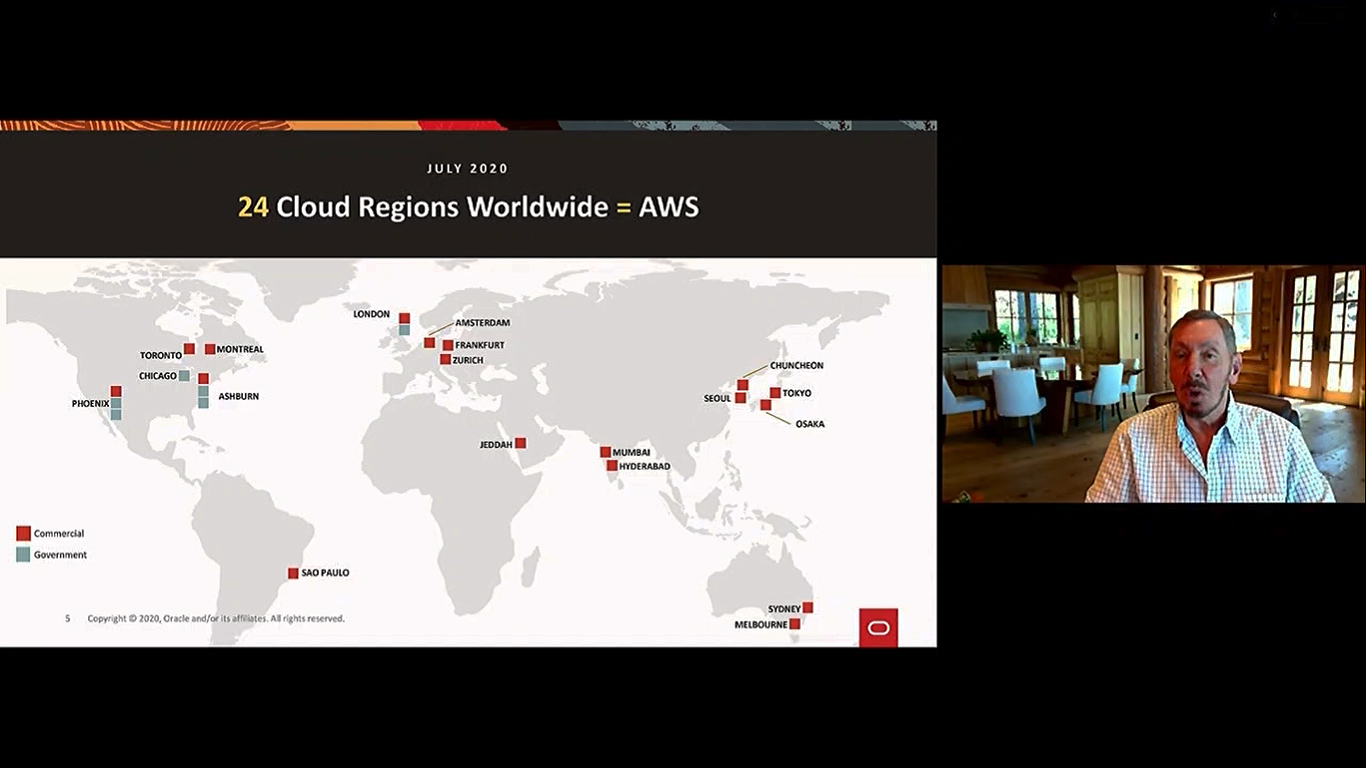
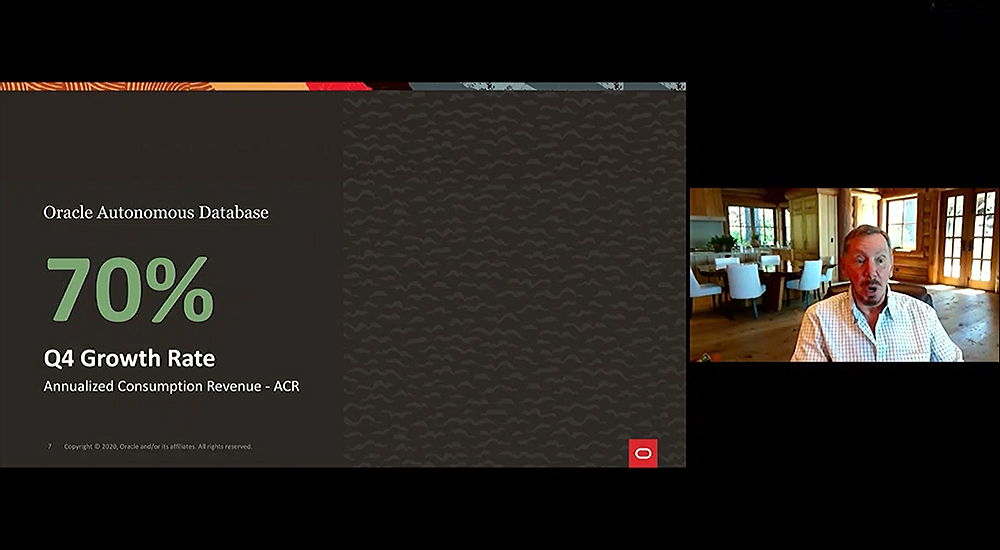
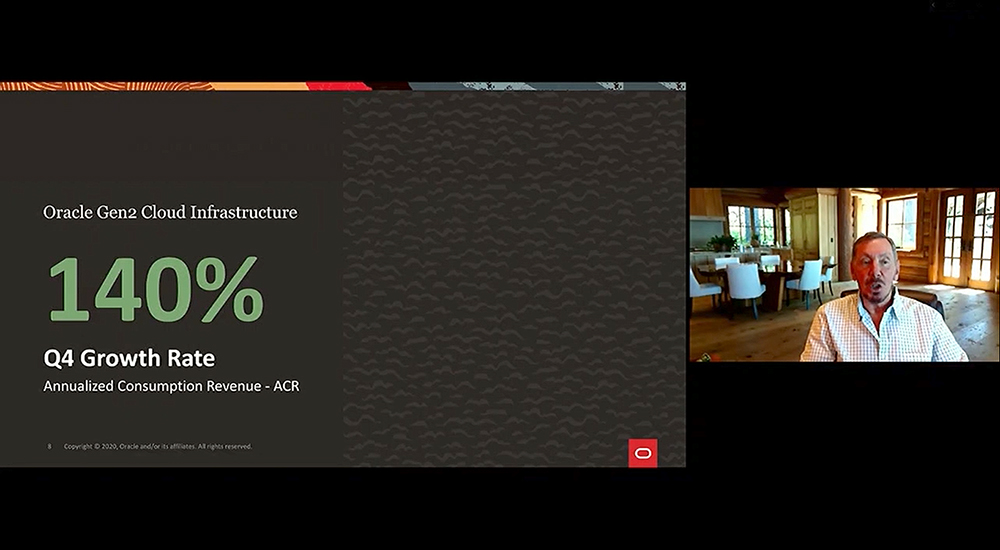
So, what is Oracle’s autonomous game plan?
Oracle also announced latest addition to its autonomous series of products, Autonomous Data Guard. Previously in 2018, Oracle had announced Autonomous Database; in 2019 Autonomous Linux; and now Autonomous Data Guard for automated data transfer and failover between primary and secondary customer sites.
All of Oracle’s autonomous services rely heavily on machine learning. The most visible use case of autonomous services that use machine learning are self-driving cars, facial recognition and computer vision, and databases. Points out Ellison, an autonomous Uber is safer than the present Uber with a human driver. “Eliminate human labour, you eliminate human error.” No autonomous use case is autonomous until the human is taken out of the equation.
This is the principal driver in the use cases of autonomous services. Since they are highly automated and do not require human intervention, they are cheaper in terms of skilled operating costs. But since they are free from human error, there are also cheaper in terms of total cost of ownership.
Key takeaways

Key takeaways
- Oracle has 24 global cloud regions.
- The difference between a Generation 1 cloud and a Generation 2 cloud is availability of autonomous services.
- There is nothing to learn and nothing to do, once Oracle Autonomous Database is inside the customer’s datacentre.
- Encryption security is always on and there is no downtime required for patching.
- Oracle databases are patched as soon as they are available.
- Users are not even aware that the database is being updated.
- Elastic scaling takes care of increasing and reducing the number of users.
- Almost all of the global data losses, have stemmed from human error.
- Data losses are impossible in an autonomous system because there are no humans to make mistakes.
- You cannot make a mistake with the Oracle Autonomous Database.
- You cannot make mistakes in a 100% automated process.
- The Oracle Autonomous Database requires no human intervention, and eliminates the possibility of human error.
- The administrator of Oracle Autonomous Database, can never see the resident data.
- Ellison stresses that Oracle Autonomous Database is the most secure database in the world.
- Oracle Autonomous Database has been built with a fault tolerant architecture
- Oracle Autonomous Database has been tested to be 99.995% available, with a downtime of 2.5 minutes per month.
- Oracle Autonomous Database is continuously tuned using machine learning and is hosted on Exadata, Oracle’s fastest hardware platform.
- Time is money in the public cloud.
- Autonomous Data Guard will be available from August 2020.
The Oracle Autonomous Database was announced in 2018, and still remains the world’s only autonomous database. The Oracle Autonomous Database once implemented through Oracle Dedicated Region Cloud or Oracle’s Exadata Cloud@Customer, automates the datacentre, the networking infrastructure, and the database. “There is nothing to learn and nothing to do,” says Ellison, once Oracle Autonomous Database is inside the customer’s datacentre.
Encryption security is always on and there is no downtime required for patching. All Oracle databases are patched as soon as it is announced, while the systems are running, and users are not even aware that the applications are being updated. Elastic scaling takes care of increasing and reducing the number of users.
The benefits of an autonomous system are enormous. Human labour is far more expensive than the costs of the IT infrastructure. “But the most important benefit, I believe, is that it eliminates human error,” says Ellison. By eliminating humans from the equation, there are huge benefits in security and preventing data loss. Almost all of the global data losses, have stemmed from human error. “Data losses are impossible in an autonomous system because there are no humans to make mistakes,” adds Ellison. “You cannot make a mistake with the Oracle Autonomous Database. You cannot make mistakes in a 100% automated process.”
The Oracle Autonomous Database requires no human intervention, eliminates the possibility of human error, and thus rules out the possibility of data loss. Moreover, the administrator or creator of Oracle Autonomous Database, can never see the resident data. This makes it one of its kind in the world, prompting Ellison to stress that it is the most secure database in the world.
Ellison points to the 2019 incident of Capital One servers getting breached on AWS cloud due to inadequate switch provisioning. Ellison says the cloud services on AWS like Aurora, Red Shift, Dynamo, and others are manually set up and complex. “All AWS databases require complex manual provisioning.” When human beings are using very complex cloud systems, they can make mistakes, which resulted in the breach of data on Capital One’s hosted server.
Oracle’s Autonomous Suite
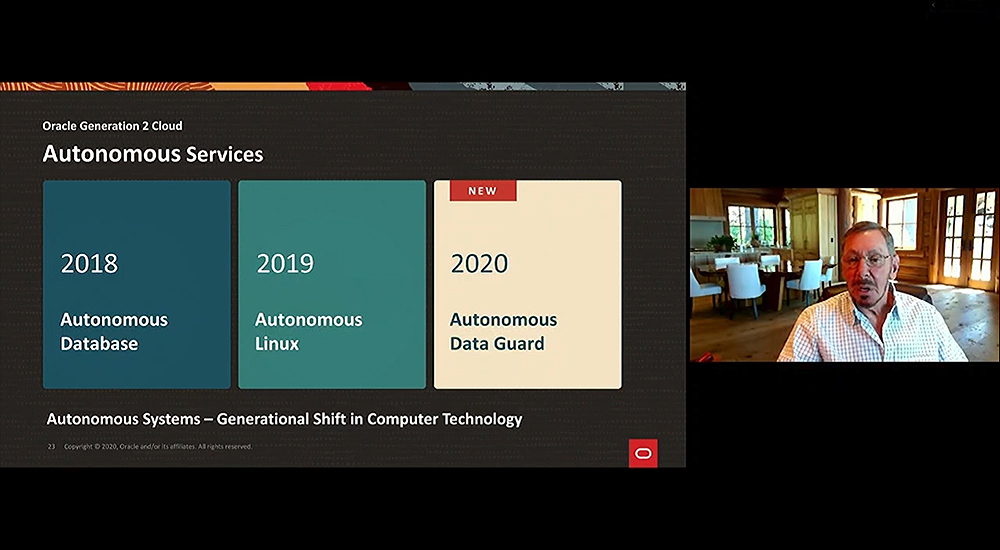
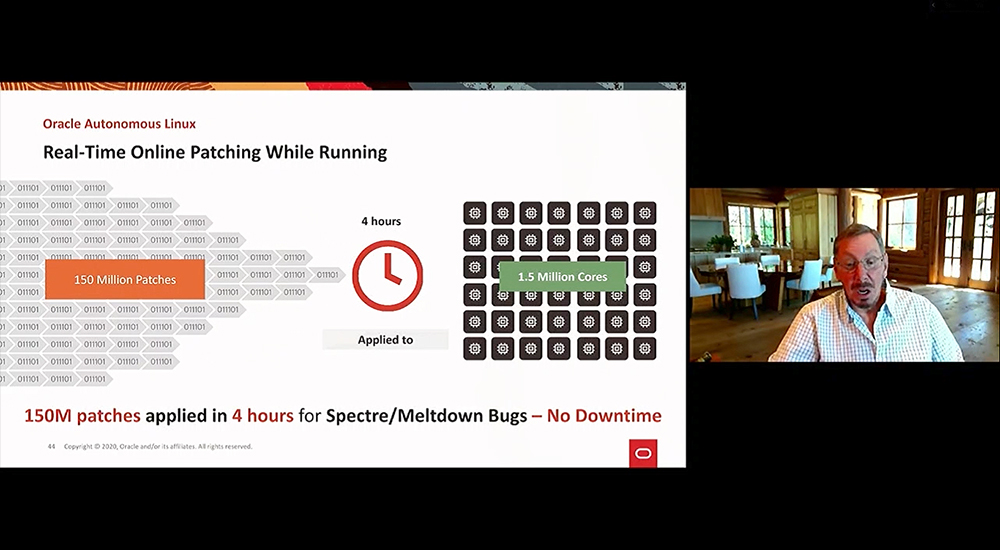
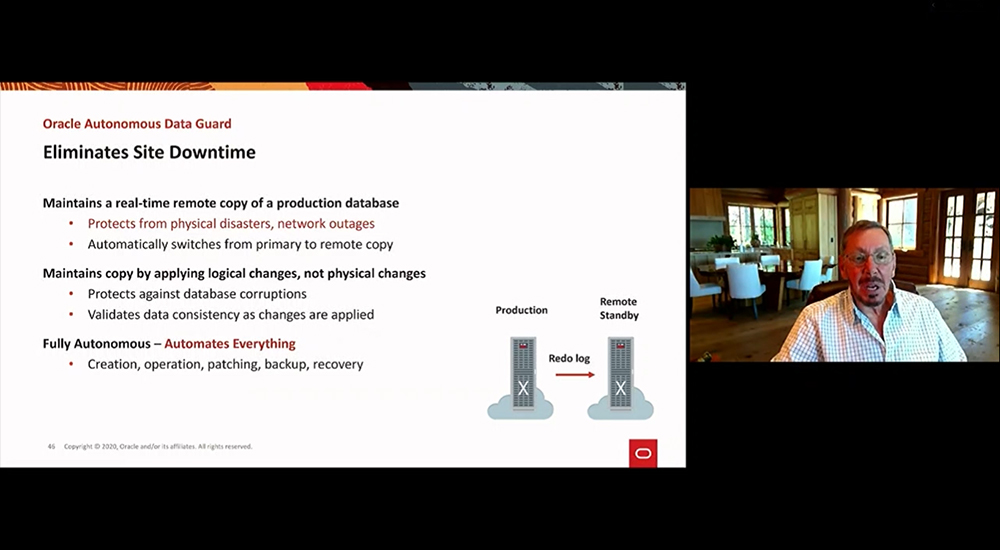
By automating processes, human intervention can be eliminated with the Oracle Autonomous Database. But how do you eliminate the possibility of hardware and software failure? It is for this reason that, Oracle Autonomous Database has been built with a fault tolerant architecture and will switch over to another Oracle cloud region, in case of hardware, software, or datacentre failure at the customer premises. Oracle Autonomous Database is elastic and serverless and does not bill customers if it is not being accessed by any Oracle application.
With the above architecture, Oracle Autonomous Database has been tested to be 99.995% available, with a downtime of 2.5 minutes per month. This makes it 25X more reliable than Amazon databases. Oracle Autonomous Database is continuously tuned using machine learning and is hosted on Exadata, Oracle’s fastest hardware platform.
Why run fast in the public cloud? The reason according to Ellison is cost. “Time is money in the public cloud.” If the Oracle database platform is twice as fast as others, then the time spent computing will be half and the billing will also be half. Oracle has now given a guarantee to any AWS customer moving to Oracle Database powered by Oracle Autonomous Database, that the migration will cut their Amazon bill in half.
Successful usage of Oracle Autonomous Operating System Linux across 2019 and into 2020 and innovation within Oracle Autonomous Database since 2018, have led Oracle to launch its third offering Autonomous Data Guard. Autonomous Data Guard will be available from August 2020. This service automatically creates a secondary or standby datacentre that is geographically isolated from the customer’s primary datacentre. Autonomous Data Guard ensures that all data, updates, backup are automatically completed between the two sites, that is primary and secondary sites. Since it is an autonomous service, there is no human intervention and no scope for errors.
With a power packed trio of autonomous services, Oracle is beginning to set the high note of innovation, disruption, and transformation in the public, private and hybrid cloud.
Taking on AWS
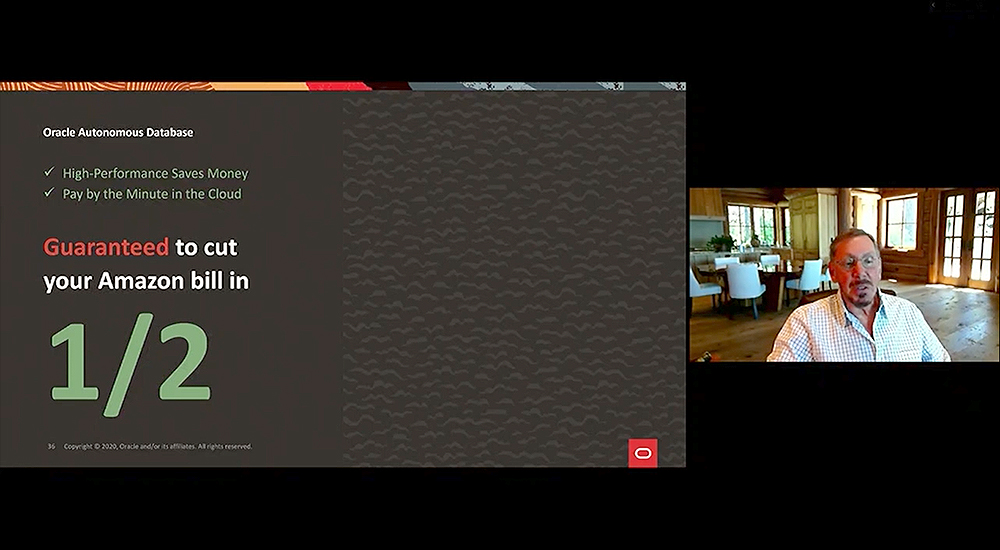
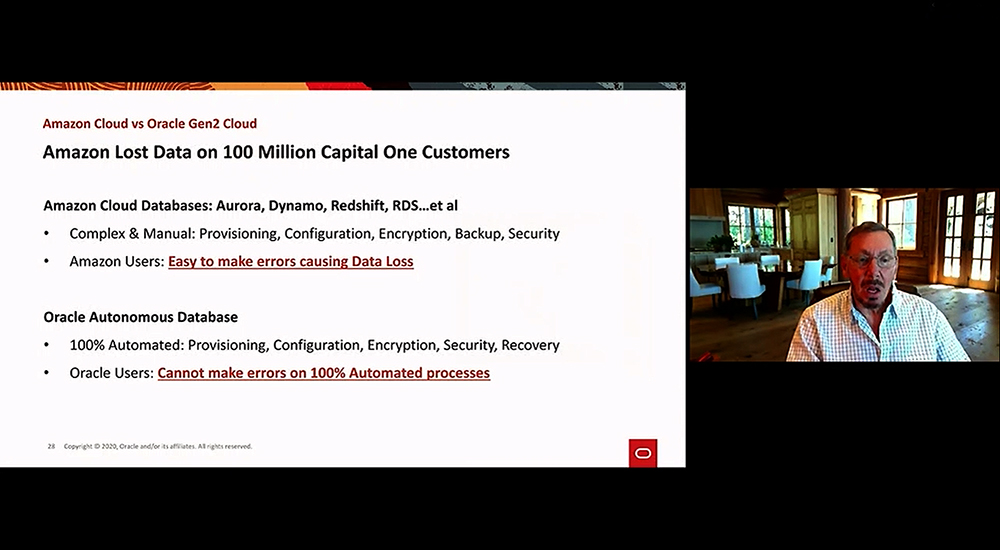
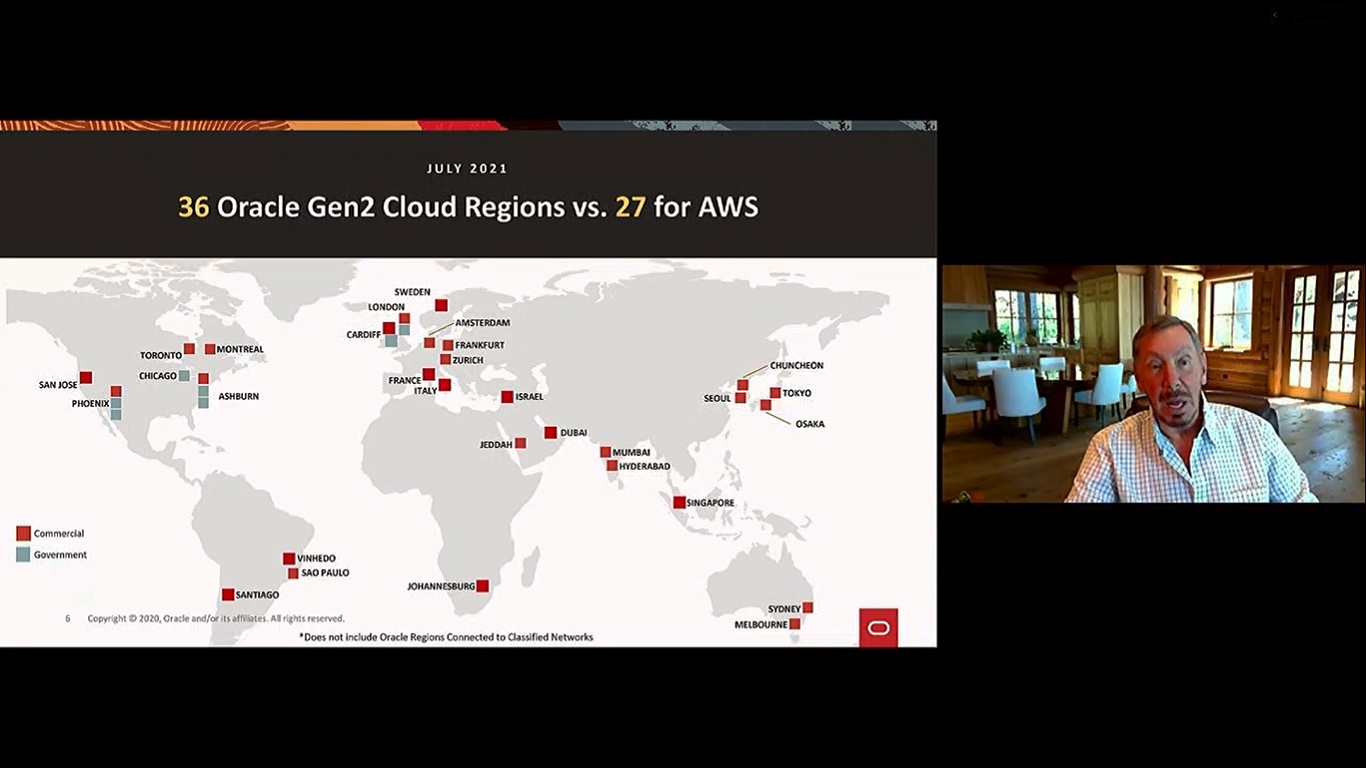
Taking on AWS
- Next year, Oracle plans to increase the number of global cloud regions to 36, versus 27 announced by AWS.
- Ellison points to 2019 incident of Capital One servers on AWS due to inadequate switch provisioning.
- Ellison says cloud services on AWS like Aurora, Red Shift, Dynamo, require complex manual provisioning.
- Oracle Autonomous Database is 25X more reliable than Amazon databases.
- Oracle has given a guarantee to AWS customers moving to Oracle Database, their Amazon bill will be cut in half.
Oracle Dedicated Region Cloud@Customer to drive private cloud
Most enterprises are continuing to run a part of their workloads in on-premises datacenters. This has resulted in demand from customers for a hybrid architecture, where the same services and portability of applications exists between public and on-premises cloud environments. Until today, no solution was able to bridge the gap between cloud and on-premises environments. Typically, on-premises offerings from cloud providers offer a small subset of the services available in public cloud regions. Enterprise customers have been asking for the full experience of a public cloud on-premises, including access to all of Oracle’s cloud services, to run their workloads.
Driven by strong customer demand, Oracle has announced availability of Dedicated Region Cloud@Customer, a fully-managed cloud region with Oracle’s second-generation cloud services, including Autonomous Database and Oracle SaaS applications, within the customers datacenters. The service is priced at $0.5M per month.
With this announcement, Oracle is porting all of its cloud services to on-premises. Enterprises can now use Oracle’s cloud services wherever they need them – in the cloud or on premises via Cloud@Customer offerings. With Oracle Dedicated Region Cloud@Customer, enterprises get all of Oracle’s second-generation cloud services, including Autonomous Database, in their datacenters. Other cloud service providers cannot offer customers a comparable dedicated cloud region running on-premises.
Oracle Dedicated Region Cloud@Customer includes full management capabilities and access to new features and functions the moment they become available in Oracle’s public cloud. It provides strong isolation of customer data, including all API operations, which remain local to customer datacenters and provide the highest levels of security.
Enterprises get the same set of modern cloud services, APIs, industry-leading SLAs, superior price-performance, and highest levels of security available from Oracle’s public cloud regions, within their own datacenters. This is well suited for highly regulated or security-sensitive businesses needing to meet latency and data residency requirements.
Oracle Dedicated Region Cloud@Customer is certified to run Oracle SaaS products including ERP-Financials, HCM, SCM, and CX, making it an integrated cloud experience on-premises. Customers only pay for services they consume using the same predictable low pricing offered in Oracle’s public cloud regions.
With Dedicated Region Cloud@Customer, Oracle is delivering public cloud experience into customer datacenters, with no changes in pricing or capabilities. This represents a new direction for public cloud providers, who have offered only limited versions of their services to customer premises. Oracle Dedicated Region Cloud@Customer brings the capabilities of Oracle Cloud Infrastructure and Oracle Fusion SaaS Applications, including over 50 services, on-premises. This brings together public cloud service capability with the compliance, latency and co-location benefits of on premises. This can be a game changer for large scale digital transformation efforts at enterprises.
Oracle Autonomous Database ported onto Exadata Cloud@Customer
Building on the success of Oracle’s Exadata Cloud@Customer service over the last three years, Oracle announced the availability of Oracle Autonomous Database on Exadata Cloud@Customer. This combines Oracle Database with Oracle Database platform—Exadata—delivered as a cloud service in customer datacenters. It eliminates database management and capital expenditures while enabling pay-per-use and elastic consumption of database cloud resources. Autonomous Database is available to run in customer data centers both as a standalone offering and as part of Oracle Dedicated Region Cloud@Customer.
Oracle Autonomous Database on Exadata Cloud@Customer is the fastest transition to a cloud model with typical deployments taking less than a week, while data never leaves the customer’s datacenter. This is ideal for enterprises that find it challenging to move their database workloads to the public cloud due to data sovereignty, regulatory requirements, security and performance concerns, or because their on-premises applications and databases are tightly coupled.
Oracle Autonomous Database on Exadata Cloud@Customer enables organizations to move to an environment where everything is automated and managed by Oracle. Autonomous operations include: database provisioning, tuning, clustering, disaster protection, elastic scaling, securing and patching, which eliminates manual processes and human error while reducing costs and increasing performance, security and availability. The serverless architecture automatically scales to match changing workloads, providing true pay-per-use.
Every business has a set of ISV and home grown applications that they depend on to run all aspects of their business. For companies serious about running these types of critical Oracle-based applications in an on-premises enterprise database cloud, Oracle Autonomous Database on Exadata Cloud@Customer is one such offering. Oracle Autonomous Database on Exadata Cloud@Customer reduces customers’ infrastructure and database management by up to 90% because they only have to focus on the schemas and data inside their databases, not on running the underlying database infrastructure.
Oracle Autonomous Database on Exadata Cloud@Customer combines Exadata X8M platform with Oracle’s advanced machine-learning-powered database and second-generation cloud control plane for an enterprise-grade database cloud experience on-premises. The Oracle Cloud is a suite of integrated applications for Sales, Service, Marketing, Human Resources, Finance, Supply Chain and Manufacturing, plus Generation 2 Infrastructure featuring the Oracle Autonomous Database.





